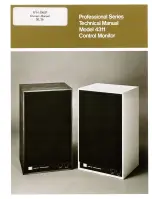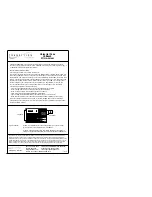
GENERAL
*
Transducer should not be subjected to greater than the maximum allowable pressure or
temperature as defined in the transducer specification.
*
Transducer should not be subjected to mechanical impact.
*
In the event of fire the end user must ensure that the system pressure is vented to a safe
area.
*
The effects of decomposition of unstable fluids should be considered by the user when
placing this device in service.
*
The pressure transducer has no means of draining or venting, this must be performed by
another component in the end users system.
*
Pressure range must be compatible with the maximum pressure being measured.
*
Pressure media must be compatible with the transducer wetted parts which are stainless steel to
UNS 31803, Ceramic and Nitrile
*
Exposed end of cable must be kept free from moisture.
*
Liquid must not be allowed to freeze in the pressure port.
MECHANICAL INSTALLATION
Pressure Connections
:
1)
G¼ internal pressure connection to BS2779. Alternative fitted as specified at time of
order.
2)
KF25 Flange
Pressure couplings screwed into G¼ pressure ports should have a maximum thread engagement of 0.5”
(13mm) and
UNDER NO CIRCUMSTANCES
be allowed to touch the pressure sensitive
diaphragm. Pressure couplings should be sealed against the outer face at the pressure port entry using
bonded seal washer such as:-
Part Number
Description
Dowty Ref
GA29
G¼ bonded seal up to +212°F (+100°C) operation
400-021-4490-02
GA30
G¼ bonded seal up to +392°F (+200°C) operation
300-021-0967-02
GA31
G1/8 bonded seal up to +392°F (+200°C) operation
300-020-0967-02
Refer to Dowty for external pressure ratings.
Mounting
: Pressure Transducer is designed to be attached by the coupling thread. Alternatively units
fitted with an immersible cable can be suspended via the cable or flange. Omni-directional. To fit, use a
5/8 UNF AF (M16) wrench on the hexagon provided and apply maximum torque of 20 lbf-ft (27 Nm).
The Customer must ensure that the pressure seal is suitable for the application. If in doubt contact Setra
Systems.
Effects of Heat
: Avoid mounting the transducer near a source of heat which is liable to create a
temperature gradient across the instrument. If this is unavoidable, use a heat shield to deflect uneven
radiated heat or wrap the transducer in glass fibre insulation so that an even temperature is assumed
throughout.
Содержание 550
Страница 9: ......



























